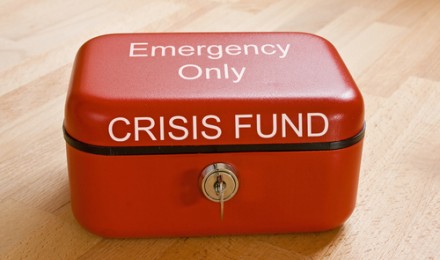With the many stock, bond, mutual fund and other investments, choosing among the investment alternatives can be difficult. While there is no perfect investment, there are some that fit better than others. The majority of individual investors (as opposed to corporations) choose to put the bulk of their money in mutual funds and ETF’s. Some who like to do a little more of their own management might choose to invest in individual issue stocks and bonds. While there are still others who will choose to take a more complicated approach and use a variety of other investments. Whatever a person chooses, it is important to understand how their investment achieve their investment goals.
Mutual funds are the primary choice for most individual investors. A mutual fund is made up of many different investments, mostly stocks and bonds, and managed by a mutual fund company. When a person buys one share of a mutual fund, they are buying hundreds of fractions of shares in multiple underlying companies. The reasoning behind this is to reduce volatility. If any one company held by the fund fails, the entire fund will not lose tremendous value. The other side is that if any one company does extremely well, the entire fund will only go up slightly. The end result is the highs and lows are taken out, and the investor will hopefully feel a much smoother ride. Since so much work goes into a mutual fund, there are sales charges and fees associated with owning them. Up-front sales charges are often around 5.75% (this charge goes down when breakpoints are met) for equity based funds, and ongoing expenses average around 1%. Hopefully with active management these charges and expenses can be offset with better than average performance. Mutual funds are only priced and traded at the end of every trading day.
An offspring of the mutual fund is the Exchange Traded Fund, or ETF. Several years ago investors wanted a product that was structured like a mutual fund, but was priced and re-priced constantly throughout the trading day. The result was the birth of the ETF. Similar in setup to the mutual fund, in that it has multiple underlying issues, the ETF aims to reduce volatility for the investor. Instead of up-front sales charges the investor will pay a brokerage commission, anywhere from just a few dollars per trade at a discount brokerage firm, or several hundred at a full service firm. The benefit is that the investor can lock in their gains before the end of the trading day.
Individual issues are the backbone of the market. Every company that is publicly traded sells shares of stock and sells bonds. The indices are made up of select stocks and bonds, so when a person hears that the market went up 100 points, it usually refers to the Dow Jones Industrial Average, and means that index went up 100 dollars (note: you cannot directly invest in an index). For the assertive do-it-yourself type investor, they may want to put their money in individual issues. The best way to do so is at a discount brokerage where they will pay just a few dollars per trade. They can research the company financials, choose stocks they think will increase in value over the short, or long, term and watch their account. These are all services provided by the mutual fund and paid for in the sales charge and expenses. Unless a person really knows how to read the market and can understand company financials, those investing in individual issues often do not get as good of a return as those who invest in mutual funds.
There are a lot of different places a person can put their money. The best choice is to get an account set up, and choose a low-cost index funds (these are mutual funds that will mirror the stock market or bond market indices) that meet your asset allocation goals for investment in stocks and bonds. The best thing a person can do is determine their risk tolerance, and research which funds or investments will help them to meet their goal. The bottom line is to invest in quality investments, and stay the course. Do not let emotions get in the way of investing logically. Decide on a plan that achieves your goals with and keeps within your risk tolerance. Review your portfolio on a quarterly or semi-annual basis and reconsider your investment alternatives then. If you’re thinking about your portfolio all the time, your portfolio may have more risk than you’re comfortable with.
With the many stock, bond, mutual fund and other investments, choosing among the investment alternatives can be difficult. While there is no perfect investment, there are some that fit better than others. The majority of individual investors (as opposed to corporations) choose to put the bulk of their money in mutual funds and ETF’s. Some who like to do a little more of their own management might choose to invest in individual issue stocks and bonds. While there are still others who will choose to take a more complicated approach and use a variety of other investments. Whatever a person chooses, it is important to understand how their investment achieve their investment goals.
Mutual funds are the primary choice for most individual investors. A mutual fund is made up of many different investments, mostly stocks and bonds, and managed by a mutual fund company. When a person buys one share of a mutual fund, they are buying hundreds of fractions of shares in multiple underlying companies. The reasoning behind this is to reduce volatility. If any one company held by the fund fails, the entire fund will not lose tremendous value. The other side is that if any one company does extremely well, the entire fund will only go up slightly. The end result is the highs and lows are taken out, and the investor will hopefully feel a much smoother ride. Since so much work goes into a mutual fund, there are sales charges and fees associated with owning them. Up-front sales charges are often around 5.75% (this charge goes down when breakpoints are met) for equity based funds, and ongoing expenses average around 1%. Hopefully with active management these charges and expenses can be offset with better than average performance. Mutual funds are only priced and traded at the end of every trading day.
An offspring of the mutual fund is the Exchange Traded Fund, or ETF. Several years ago investors wanted a product that was structured like a mutual fund, but was priced and re-priced constantly throughout the trading day. The result was the birth of the ETF. Similar in setup to the mutual fund, in that it has multiple underlying issues, the ETF aims to reduce volatility for the investor. Instead of up-front sales charges the investor will pay a brokerage commission, anywhere from just a few dollars per trade at a discount brokerage firm, or several hundred at a full service firm. The benefit is that the investor can lock in their gains before the end of the trading day.
Individual issues are the backbone of the market. Every company that is publicly traded sells shares of stock and sells bonds. The indices are made up of select stocks and bonds, so when a person hears that the market went up 100 points, it usually refers to the Dow Jones Industrial Average, and means that index went up 100 dollars (note: you cannot directly invest in an index). For the assertive do-it-yourself type investor, they may want to put their money in individual issues. The best way to do so is at a discount brokerage where they will pay just a few dollars per trade. They can research the company financials, choose stocks they think will increase in value over the short, or long, term and watch their account. These are all services provided by the mutual fund and paid for in the sales charge and expenses. Unless a person really knows how to read the market and can understand company financials, those investing in individual issues often do not get as good of a return as those who invest in mutual funds.
There are a lot of different places a person can put their money. The best choice is to get an account set up, and choose a low-cost index funds (these are mutual funds that will mirror the stock market or bond market indices) that meet your asset allocation goals for investment in stocks and bonds. The best thing a person can do is determine their risk tolerance, and research which funds or investments will help them to meet their goal. The bottom line is to invest in quality investments, and stay the course. Do not let emotions get in the way of investing logically. Decide on a plan that achieves your goals with and keeps within your risk tolerance. Review your portfolio on a quarterly or semi-annual basis and reconsider your investment alternatives then. If you’re thinking about your portfolio all the time, your portfolio may have more risk than you’re comfortable with.







